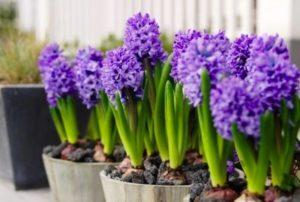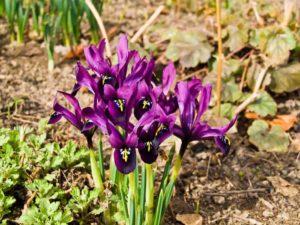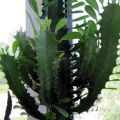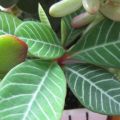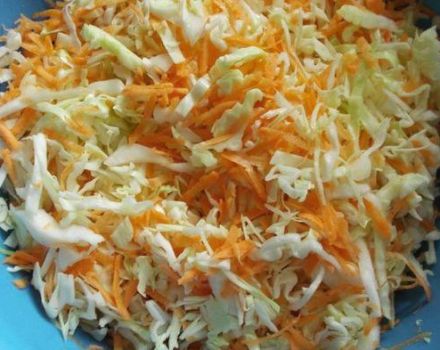Planting and caring for perennial garden milkweed, reproduction and cultivation
The Euphorbia family has more than 1,500 species. It includes perennial and annual grasses, small trees and shrubs. Garden spurge is a bright representative of the family. It is called street and is used to decorate garden beds and park areas. The name of the plant is based on the peculiarity of the plant to produce milky sap.
Benefits of using garden milkweed in landscaping
Varieties of garden milkweed allow you to use it in design compositions:
- low succulent varieties are suitable for decorating rock gardens;
- medium-sized bushes are planted along curb lines to limit or delineate space;
- many varieties are used to highlight recreation areas;
- undersized species are planted around tall trees, around coniferous bushes.
Compositions using perennial milkweed help not only to make the site more spectacular, but also to delimit the space.
Varieties and description of milkweed
The official botanical name for milkweed is euphorbia. The homeland of the plant is the African continent. Wild species still grow on the island of Madagascar.
Each of the varieties of garden milkweed has specific traits, but the researchers also highlight several common characteristics:
- Plants-honey plants. Due to the long flowering period, the bees collect good quality honey.
- In plants of the family, branched vessels are formed through which milky sap flows.
- Milkweed seeds are collected in boxes.

Bordered
This annual variety is especially common because of its ability to bloom from June to the first frost in the fall. The appearance of the bushes explains its name. The leaf plates of a dark green hue are bordered with a white openwork line, which makes the plant unusual and elegant.
- The flowers of the bordered variety are small, pale, collected in simple inflorescences.
- The bush reaches 10-12 centimeters.
- Rhizome: branched, with fine hairs.
The variety is easily propagated by seed. Seedlings become visible 10 days after sowing.
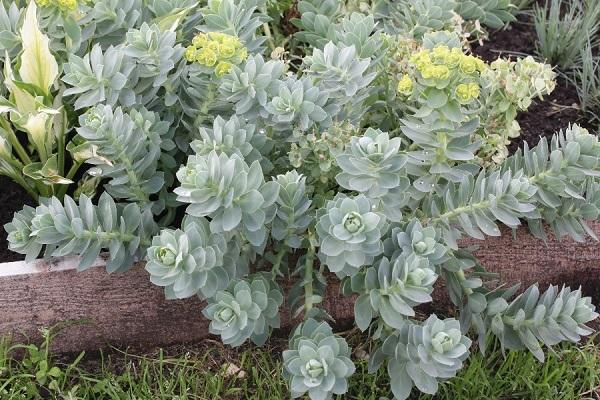
Myrtle
A perennial plant that is often used to decorate artificial reservoirs.Many landscape designers take it as a basis in compositions of rocky or alpine hills.
The bush grows up to 25 centimeters. The flowers are bright yellow. The flowering period includes 2 stages: the first time the myrtle leaves bloom in April, the second stage occurs in July. Thickened leaf plates, which are characteristic of succulents, give the bush decorativeness.
Almond-shaped
Almond spurge is known for its beautiful flowers, collected in complex inflorescences. They have a pale green hue, unusual for flowers. The bush grows up to 60 centimeters. This variety grows exclusively in the south, when temperatures drop to +10 degrees, the bushes freeze out.
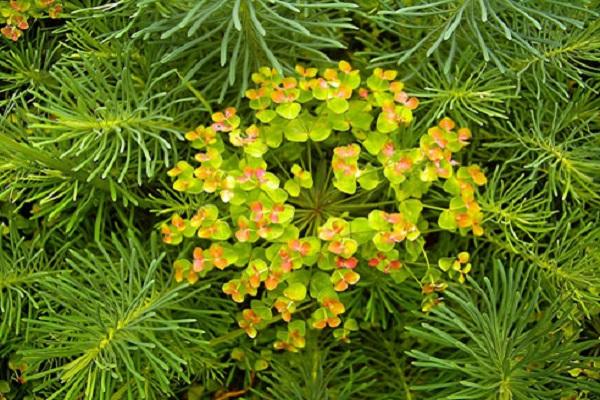
Cypress
Perennial bushes stretch from 25 to 40 centimeters. The stems are covered with leaves that look like elongated pine needles. The stems are crowned with lush spherical yellow flowers. This variety blooms twice a season. It is resistant to droughts and can tolerate frosts down to -20 degrees.
Capitate
The variety belongs to the type of ground cover. The maximum length of the bush is 10 centimeters. Blooms in vibrant orange, yellow or red flowers. Able to grow rapidly and completely displace other plants from the territory. Usually it is planted where it is necessary to decorate plots of land. The variety is drought-resistant and also exhibits frost-resistant qualities.
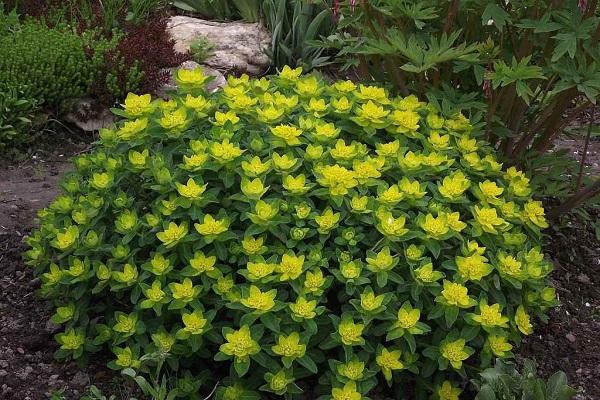
Multi-flowered
One of the most popular types. It belongs to perennials, resistant to frost and drought. It is grown in the territories of the northern regions and does not need additional shelter in winter.
Bushes reach 70 centimeters. With their help, designers create spectacular multi-level flower beds. Throughout spring and summer, the foliage of the multiflorous milkweed changes from deep green to lemon yellow. This creates the feeling of renewing the flower bed without additional effort.
How culture reproduces
Different methods are suitable for flower growers who are engaged in the cultivation of milkweed. The choice depends on the goals pursued and the availability of planting material.
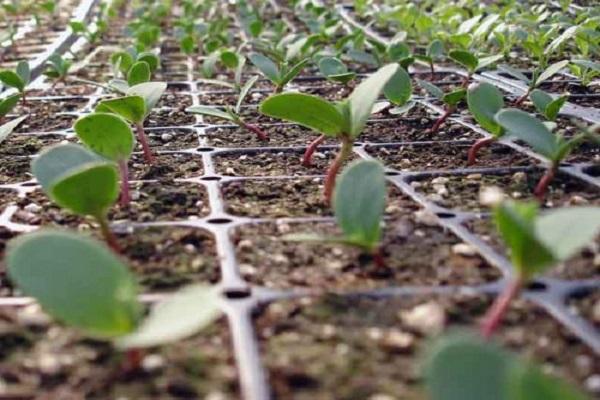
Seeds
Seeds of varieties are purchased in specialized stores or collected independently. Small black seeds ripen completely a few weeks after the last flowering.
Seeds are sown in autumn for wintering in the ground or in spring. The planting material is stratified during spring sowing, and then buried into the soil by no more than 3 centimeters.
Cuttings
This breeding method involves growing seedlings. It is considered one of the most effective and commonly used options. Propagation by cuttings is possible in the presence of an adult full-fledged bush with intact stems and leaves.
Cuttings are cut in spring or autumn. In the first case, after rooting, they are planted in areas of open ground, in the second, they are left for growing. As a rule, growing takes place on closed terraces, maintaining the temperature regime from +15 to +20 degrees.
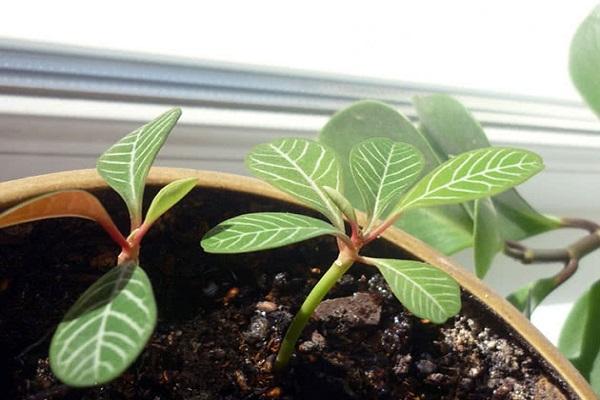
By dividing the bush
This method is suitable for tall varieties with a developed root system. In spring or autumn, the plants are dug up, then the rhizomes are divided into 2 or more parts with a sharp knife. The bushes separated from the mother plant are planted in the traditional way. The division of the bushes allows you to fully preserve the varietal characteristics.
Planting technology in open ground
Cultivation has some nuances associated with the peculiarities of the culture. The further growth of the plant depends on the choice of the place and the timely introduction of dressings.
Terms of planting works
Spring planting is considered the best option. This is due to the natural growing season. If necessary, planting is done in the fall, but then they provide additional shelter for the winter.

Preparation of the planting pit and soil mixture
The soil must be prepared in advance, it must meet several requirements:
- acidity index - from 6 to 7 ph;
- the presence of drainage (for this it is recommended to use crushed sphagnum moss);
- the structure should be light, saturated with air;
- areas of the shaded type, out of direct sunlight.
The soil should contain humus, sand and peat. Along with the sod land, wood ash or brick chips are added to the soil. A hole for planting is dug out in a day and left for the earth to settle. The depth should not exceed 8-10 centimeters.
Landing algorithm
Euphorbia is planted at different distances, it depends on the variety.
| Medium sized bushes | 30 to 40 centimeters |
| Tall species | 50 to 70 centimeters |
| To cover the soil | 5-8 centimeters |
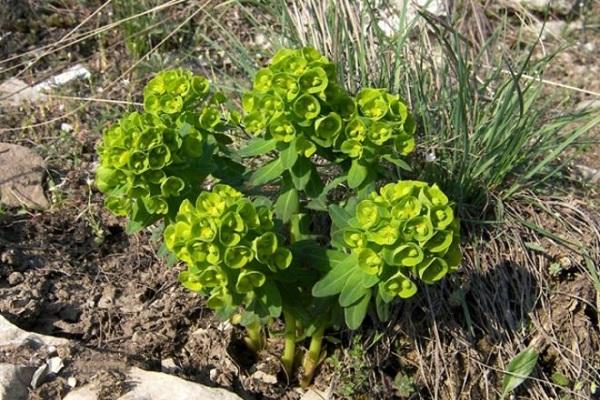
Disembarkation stages:
- A drainage layer is placed at the bottom of the pit for planting, then a compost layer.
- The plant is placed vertically.
- Fill with soil, tamp slightly.
Advice! To provide additional support for tall varieties, after planting, the spurge is tied to wooden supports.
Milkweed care
When growing a crop, it is necessary to monitor the growth of the root system. Some varieties need constant replanting to provide mature plants with room to grow.

Irrigation
Stable watering is important for milkweed. This is especially true during the first weeks after planting. Plants are watered 1 or 2 times, weekly. With the onset of dry periods, watering is increased. The topsoil should be slightly damp, but the roots should not be over-watered. Due to waterlogging of the root system, the process of decay may develop.
Important! Gardeners exclude cold watering. It leads to the development of fungal diseases.
Fertilization
One of the main dressings is applied at planting. Then, organic matter and mineral mixtures are added during the growing season. A suitable option is feeding with liquid solutions. In addition, the soil is covered with a layer of mulch.
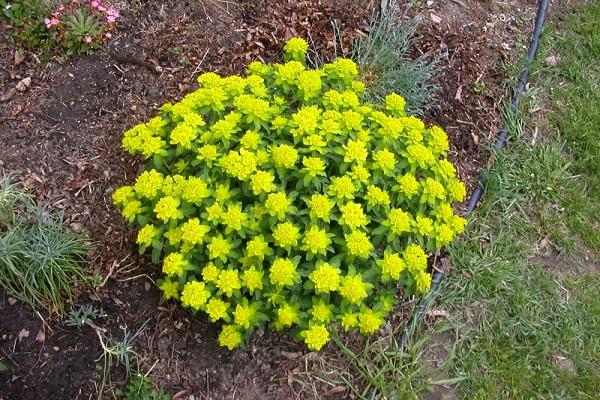
Optimum temperature and humidity
Plants need different temperatures for different stages of growth:
- for a period of active growth, milkweed has enough temperature from +15 to +25 degrees;
- seed germination takes place at +26, +28 degrees;
- sleep phases can take place at +5, +10 degrees.
Frost-resistant varieties tolerate low temperatures. To avoid freezing, bushes of perennial varieties are additionally covered for the winter.
Most varieties are succulent, so they do not need excessive moisture. The root system is quickly subject to decay if moisture accumulates in the soil.
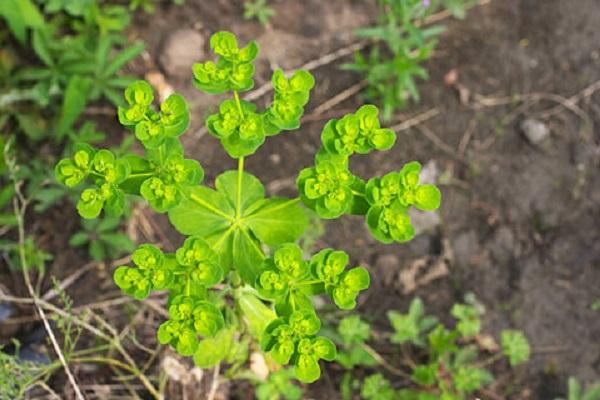
Pruning
Euphorbia is prone to overgrowth, so pruning is carried out as needed. To maintain the compactness of the bushes, the faded parts are promptly removed, and the apical and lateral shoots are pinched.
If the spurge stays on open ground in winter, then it should be cut off so that sprouts about 2 centimeters high are visible above the surface.
Pests and diseases: prevention and treatment
Due to the peculiarity of the root system, the culture is prone to fungal diseases. Prevention of these conditions:
- choice of a loose substrate;
- control over the moderation of watering;
- additional chemical treatments.
Nematodes and worms are especially dangerous for the culture. The fight against them includes additional treatment of the bushes with chemicals or soap solutions prepared by yourself.
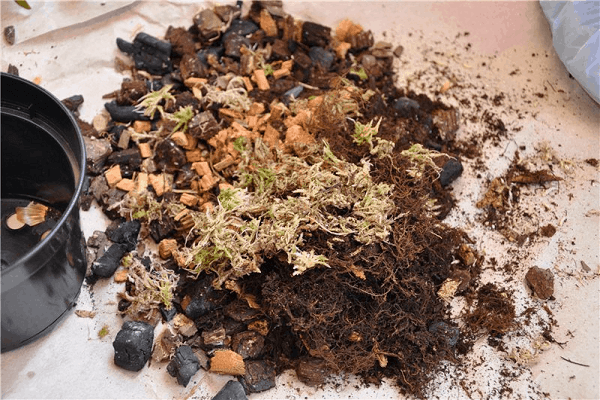
Preparing for winter
Preparations begin in the fall. Low-growing bushes are cut to 2 centimeters. The prepared plants are sprinkled with coniferous branches or cut foliage, if necessary. Tall bushes can be covered with industrial materials. Frost-resistant varieties do not need additional shelters.
